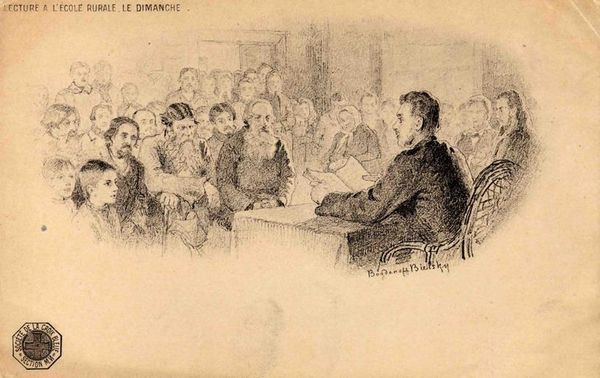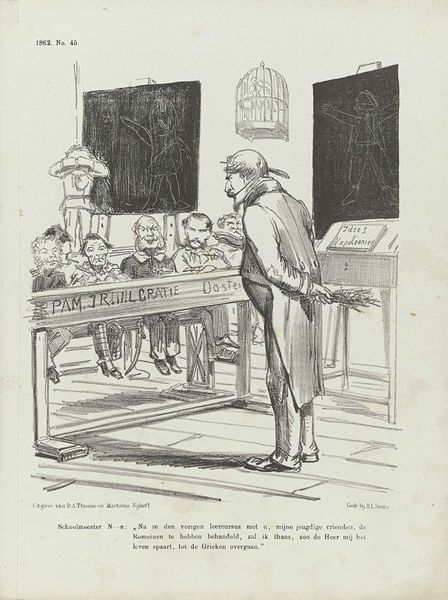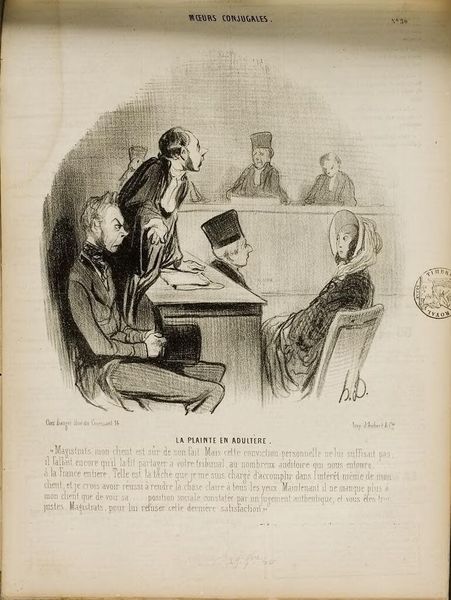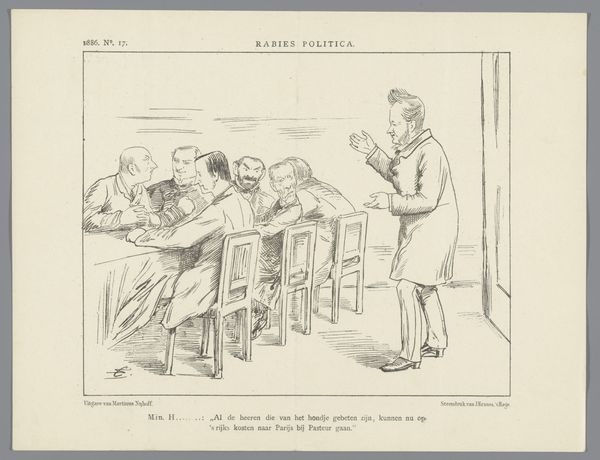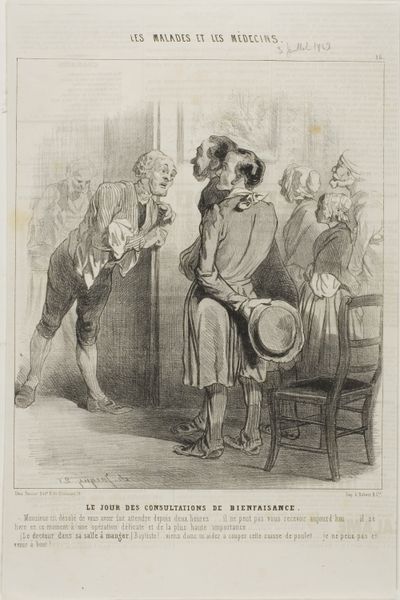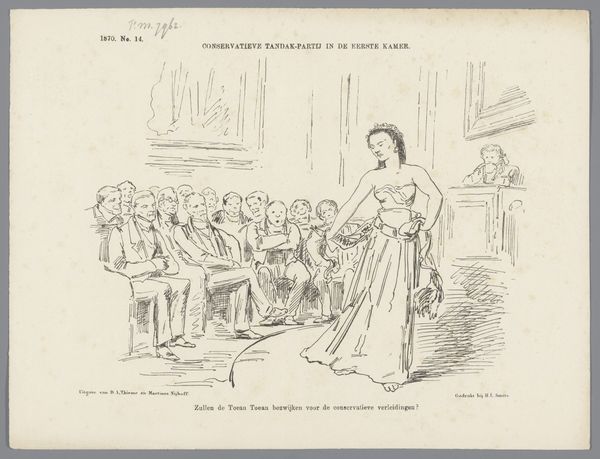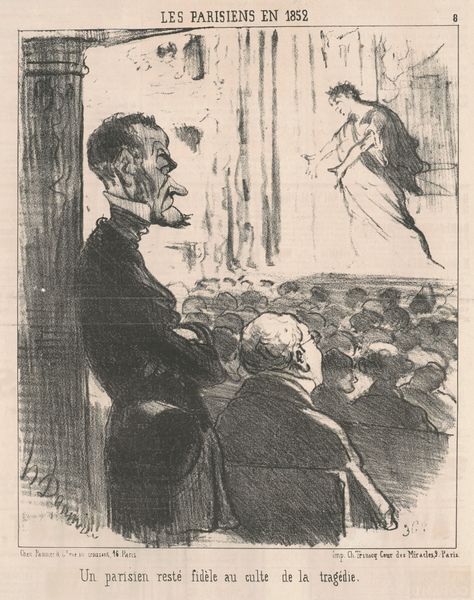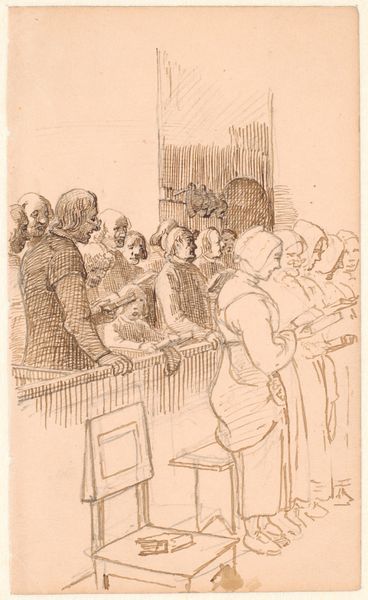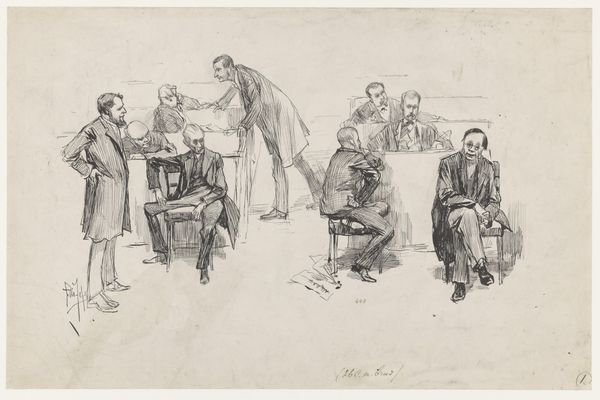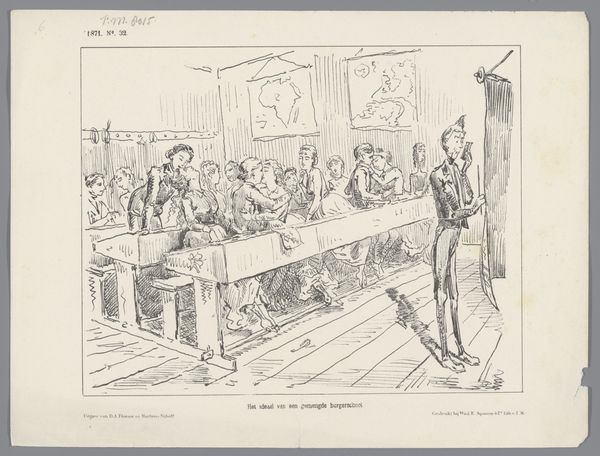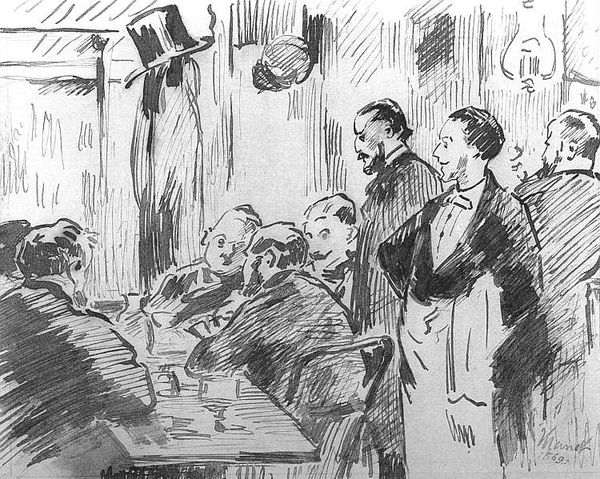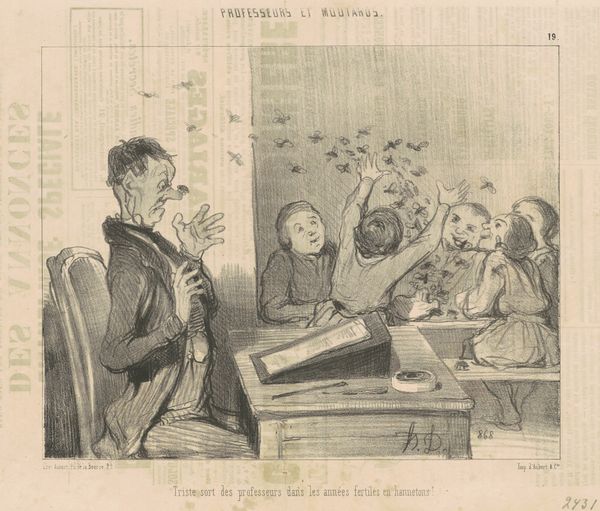
Spotprent op de parlementaire enquêtecommissie naar de toestand van de zeemacht, 1862 1862
0:00
0:00
drawing, pencil, pen
#
portrait
#
drawing
#
caricature
#
pencil sketch
#
pencil
#
pen
#
genre-painting
#
academic-art
Dimensions: height 275 mm, width 215 mm
Copyright: Rijks Museum: Open Domain
Curator: This intriguing pencil and pen drawing is titled "Spotprent op de parlementaire enquêtecommissie naar de toestand van de zeemacht, 1862," created by Johan Michaël Schmidt Crans. It's a caricature, so prepare for some pointed commentary! What's your initial read on this, given the satirical intent? Editor: Stark and bleak. A sombre mood, I'd say, evoked through the gray scale and seemingly unfinished strokes. The scene is enclosed and the backs of the figures seem defeated, despite their presumably official status. Curator: Exactly. We're seeing a parliamentary commission investigating the state of the Dutch navy in 1862. Look closer and notice the rather sorry state implied for the navy itself: dangling from a thread is a model ship with the hangman’s noose underneath! Editor: The symbolism is potent, to say the least! It brings into focus questions of national identity bound to naval power and pride—concepts particularly resonant for a nation defined by maritime trade and colonial exploits. Curator: It also hints at institutional decay, exposing failures of governance and societal priorities at the time. You see the knowing figure in the back, with a self-satisfied smirk? The rest are all faceless, their identities less relevant. This wasn't really about them as people but as representations of power. Editor: Absolutely, and how does this play into academic art? What are we seeing that reveals an established style in his era? Curator: He was celebrated in his time, actually a very talented man. A focus on proportion, a clean line... but note the contrast between that polished draftsmanship and the satirical liberties he takes to condemn this event! Editor: Thank you for elucidating. Seeing the artwork, as a historical mirror, definitely pushes us to evaluate not only progress but also how often critical issues—be they power dynamics, governance, or socio-economic woes—echo across different eras. Curator: Indeed. It’s like peering into a cracked mirror reflecting perennial anxieties about national strength and governance.
Comments
No comments
Be the first to comment and join the conversation on the ultimate creative platform.
